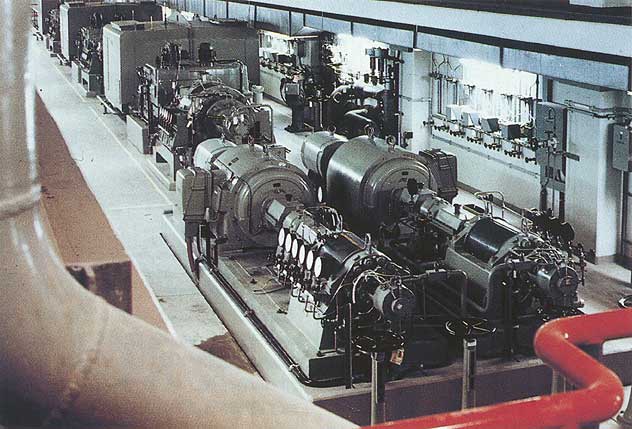| Feed water pumps | ||
Feed water pumps are almost exclusively centrifugal pumps
which convey the necessary feed water to a steam generator (the boiler in conventional power stations and boiling water
reactors or the pressure generator in pressurized water
reactors). The feed-water pumps (full-load, half-load pumps etc.) used in conventional
power stations are multistage pumps with sectional or pot-type housings; in nuclear power stations (as main feed and backing or booster
pumps) they are almost exclusively single-stage, dual flow designs with a double scroll
housing.
|
In multistage feed-water pumps, axial movements of the shaft (shaft displacement) of between ± 3 mm arise and have to be compensated by the mechanical seal. Mechanical seals are employed almost without exception for main, full-load or half-load pumps. Stuffing box packings (now found only occasionally in backing pumps) and floating ring seals are hardly ever used any longer. |
|
Feed water pumps in a nuclear power station |
||